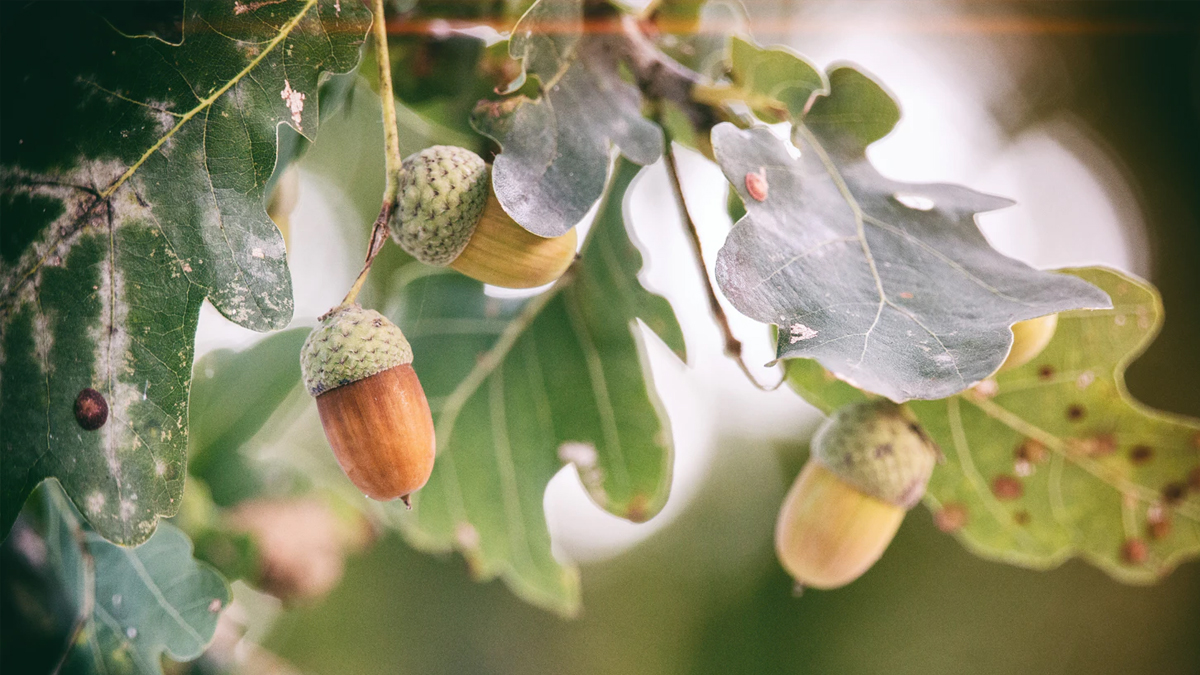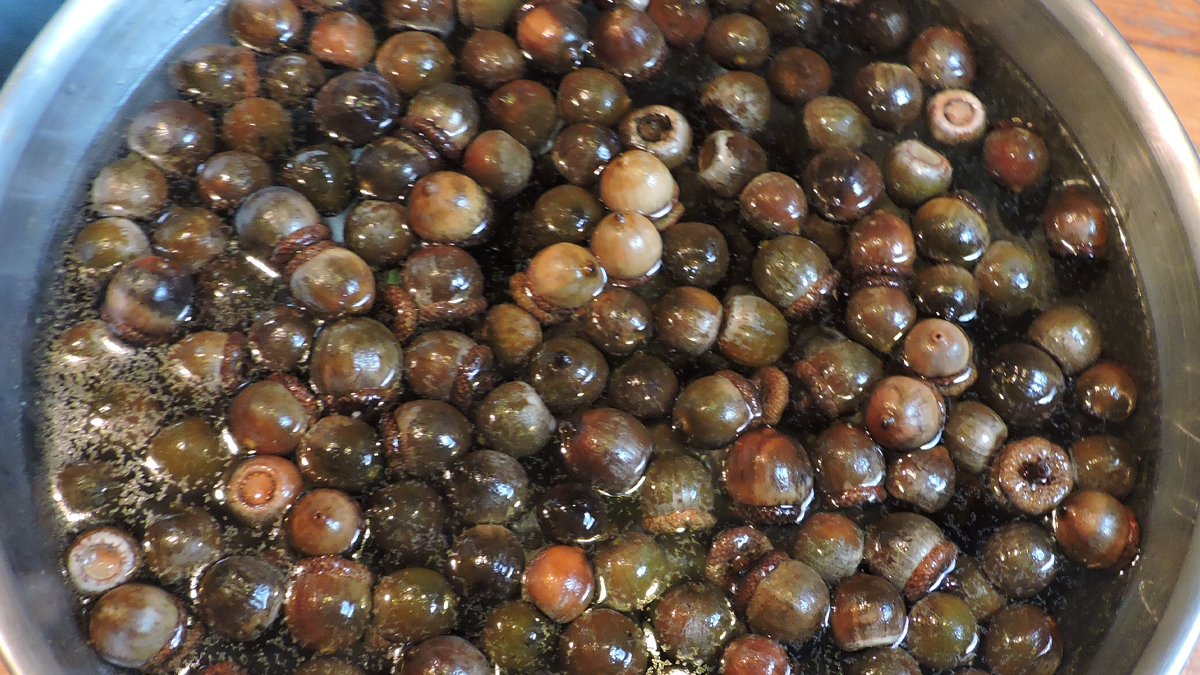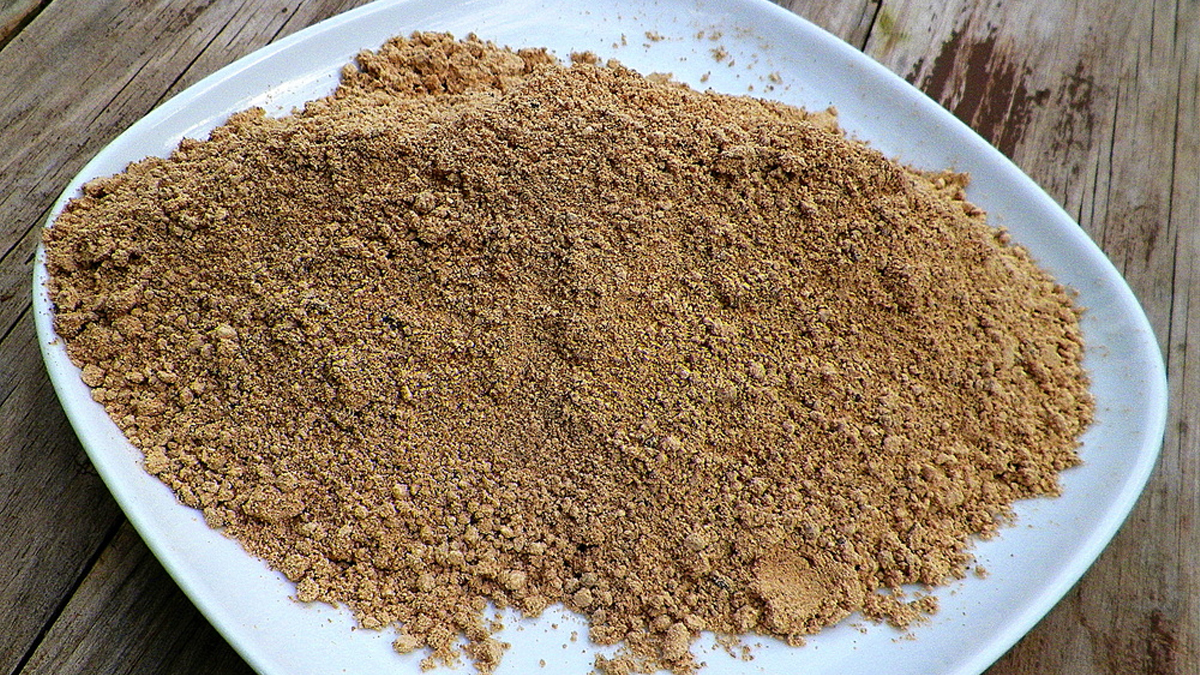on
Acorns represent one of the biggest (and most widespread) calorie jackpots in the annual wild plant food harvest, if you can beat the squirrels to them.
These high calorie nuts were a staple crop to many of our ancestors around the Northern Hemisphere and we can still rely on them for food today.
Coming in at 2,000 calories per pound, and offering healthy levels of carbohydrates, protein, and fiber, as well as being a surprisingly good source of Vitamins A and C, makes this is a wild edible that is too good to ignore. You can even use them to make medicine.
Gathering acorns
You can gather acorns anytime from September until early spring. I find gathering as the acorns fall is best. Suellen Ocean, who wrote a very useful book Acorns and Eat ’em, says she likes to collect Tanoak acorns in February and March, after many have begun sprouting.
She says acorns with sprouts between 1 to 2 inches long are still good to eat, but discard any acorn meats that have turned green. Ocean says recently sprouted acorns a) have begun to turn their starch into sugar, and b) are foolproof: “If it is sprouted, it’s a good acorn and I haven’t wasted time gathering wormy ones.”
An oak trees is an oak tree – or is it?

Not all oaks are created equal, and the fundamental fact of cooking with acorns is that you are dealing with wild food, and as such must contend with tremendous variability, both in species and even among individuals of the same species.
Some oaks bear acorns so low in bitter tannins that they can be eaten raw. Legend says that California Indians fought over these trees, which makes some sense because one mature Valley Oak can drop 2,000 pounds of acorns in a really good year. A ton of sweet acorns may well be worth fighting over.
That said, even “sweet” acorns should be leached to remove what tannins exist in them because several studies show that unleached acorns can make you constipated and can harm your teeth. Of all the species I know of, only the imported European cork oak and the Emory oak of the Sonoran Desert come close to being “sweet.”
Tannins aren’t the only thing that makes different species of acorn different. UC Riverside Professor David Bainbridge wrote in a 1986 academic paper that depending on species, acorns can range in fat content from 1.1 percent to 31.3 percent, protein from 2.3 percent to 8.6 percent, and carbohydrates from 32.7 percent to 89.7 percent. That is a huge range!
What does it mean? It means that in the kitchen you treat acorns from different species very, very differently. A fatty acorn will make a meal, like ground almonds. A carb-rich acorn — like Valley Oak acorns — makes a drier flour, more like chestnut or chickpea flour (acorns lack gluten and so will not rise.)
How to wash acorns
- Give acorns a quick rinse in cool water. Place them in a pot or bowl and fill it with water, then remove and dispose of any floating acorns, as they have likely gone bad.
- Place the acorns in a colander and run them under the tap for a minute or two to dislodge any loose dirt or hitchhiking bugs.
- Set the colander aside to let the acorns air-dry, or simply dry them by hand with a dish towel.
- Remove the shells and caps from your acorns with a nutcracker (or a hammer, if necessary). Do not eat the raw meat of the acorns yet.
How to leach acorns

Acorns contain bitter-tasting tannins, so you must prepare, treat and cook the nuts before you eat them. It sounds like a pain but it’s really not that difficult.
- Start two pots of water boiling. Drop the raw, shell-less acorns into one pot and boil until the water is the color of strong tea. Strain the nuts through a colander and drop the strained nuts into the second pot of boiling water. Discard the dark water from the first pot, then refill it and bring the water to a boil again. Repeat the process without interruption (do not let the acorns cool) until the water boils clear. This may take an hour or more, depending on the variety of acorns. *Note some people believe that boiling the acorns locks in some of the bitterness so they use the soaking method described below.*
- Alternatively, you can soak the raw acorns in warm water to leach the tannins out. Change the water when it turns a darker color. This process may take several days, depending on how long it takes for all the tannins to leach out of the acorn meat.
To avoid rotting, it’s very important that the acorns dry fully. Spread tannin-free acorns to dry on cookie sheets in a warm place. If it is hot out, lay the cookie sheets in the sun. Or, you could put them in an oven set to “warm.” You can also put the acorns in a dehydrator set on low heat.
Roasting acorns
Making acorn flour isn’t the only way you can enjoy acorns. Here’s how to roast the nuts:
- Preheat your oven to 350 degrees Fahrenheit.
- Pour the acorns into a single layer on an ungreased, rimmed cookie sheet.
- Cook the nuts for about 60 minutes or until they turn a chocolate brown color.
- Remove the acorns from the oven and let them cool. Salt to taste.
Acorn flour

When partially dry, coarse grind a few acorns at a time in a blender. Spread the ground acorns to dry on cookie sheets, then grind again in a blender. Repeat until you are left with a flour- or cornmeal-like substance.
You can also freeze your fresh acorn meal. Store dried flour in jars in the fridge.
Acorns for medicine
Remember the brown tea-like water you poured off the first soaking of acorns? Well, don’t throw it out just yet. Even though it seems like we’re brewing up some kind of medieval potion, crushed acorns and hot water can provide a great remedy for inflamed and irritated skin, as well as toothaches.
You can use the first water you pour off from the process of soaking described above. Or you can make a liquid that’s more concentrated by boiling crushed acorns (shells and all) in a pot of water. A handful of crushed acorns in one pint of water will make a small batch of strong medicinal fluid. Soak a clean cloth in this dark brown water, and apply the wet cloth to rashes, ingrown toenails, hemorrhoids, and any other inflamed skin ailment. Leave the cloth in place, and repeat this treatment as needed. For tooth troubles, simply swish the bitter water in your mouth, holding it in there as long as you can. Repeat as need, but do not swallow, as this acidic water will give you an upset stomach.
Get access to premium content and more!





